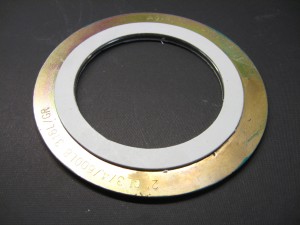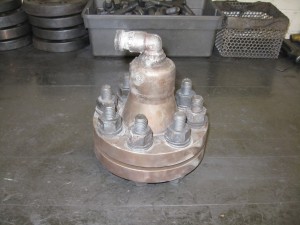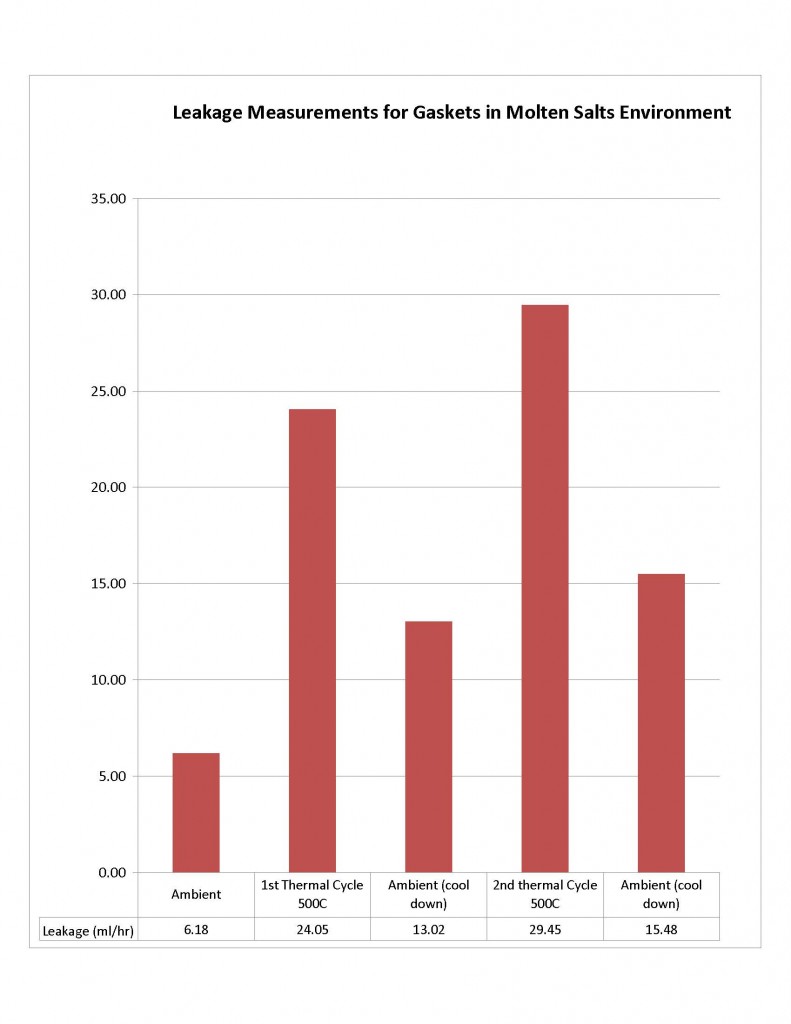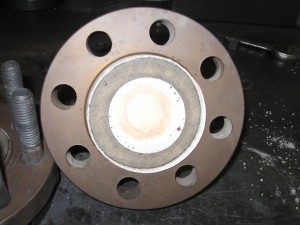By Sherwin Damdar, Senior Product Engineer and Wayne Evans, Product Development Engineer, Garlock Sealing Technologies
Solar power will undoubtedly be a key component in most countries’ energy portfolios as the world turns to more renewable resources. But the cost of solar energy – it is still considerably more expensive than fossil fuels — will remain an impediment to rapid, widespread commercialization until concentrated solar power plants become more efficient.
One way to do this is by using hotter heat transfer media, which is generating considerable interest in molten salts. The use of this medium requires developers to convert from traditional graphite-based sealing to ceramic-based solutions due to the temperature limitations of graphite. Once the sealing material of choice for high-temperature applications, graphite is being replaced by a new generation of advanced materials that can seal molten salt systems more effectively.
Concentrated solar power (CSP) systems employ mirrors or lenses to concentrate sunlight onto small areas where it is converted to heat to drive an engine linked to a power generator. Like conventional fossil fuel plants, CSP plants utilize large turbines turned by steam to generate electricity. The only difference is the source of heat for boiling the water. Its simplicity and the fact that little to no rare earth minerals are required in its manufacture make CSP technology attractive to many solar developers, especially in light of environmental concerns.
There are three basic types of CSP systems — linear dish concentrators, dish engines and power tower systems. Linear dish concentrators consist of parabolic reflectors that concentrate light onto receiver tubes positioned along their focal lines and filled with a heat transfer medium. Dish engines use a stand-alone parabolic reflector that concentrates light onto a receiver at its focal point, where a transfer fluid is heated. Solar power towers employ an array of dual-axis tracking reflectors that concentrate light onto a central tower-mounted receiver containing a heat transfer medium.
These collection systems are often supplemented by thermal storage systems from which transfer fluid can be drawn when heat from the sun is not being harvested. Using molten salts for thermal storage allows electricity to be generated even when the sun is not shining for more even production levels.
This facilitates pricing and allows production to be increased during periods of heavy demand. Moreover continuous operation is easier on the overall system; fewer startups and shutdowns reduce operating expenses, both from an equipment and labor standpoint.
Heat Transfer Fluids
Many CSP plants use synthetic oil as the heat transfer fluid. These oils are highly flammable, and their maximum operating temperature is 393°C. Molten salts, by contrast, can be used at operating temperatures in excess of 500°C, improving plant efficiency and lowering the cost of power generated.
There are a number of components in CSP plants that require sealing, including valves, flanges, pumps, piping, joints and reflector connections. Traditionally graphite has been used to seal systems using synthetic oils. Unfortunately, it begins to lose mass at elevated temperatures in oxidizing environments. Graphite is typically recommended for sealing applications up to 454°C, above the maximum for synthetic oils, but well below that for molten salts. Above this temperature, carbon in the graphite combines with oxygen from the air to produce CO and CO2 , causing it to literally dissipate into the atmosphere. The rate of oxidation varies with the temperature and amount of oxygen to which the seal is exposed.
Ceramic-based sealing solutions
To find a solution for effectively sealing highly oxidizing media like molten salts, a number of prototype ceramic-based gaskets were developed in Kammprofile, spiral wound and compressible sheet form. These gaskets were tested for their ability to withstand molten salts at elevated temperatures. Figure 1 depicts a metal-reinforced Kammprofile gasket with a ceramic sealing element.

Fig. 1 This gasket incorporates a ceramic-based sealing material to withstand molten salts in CSP plants.
The testing apparatus included a pressure vessel for the molten salts, oven, compressed air supply and leak measurement device. The pressure vessel was fitted with a pair of 2″, 300-lb. blind flanges, one of which was modified to allow fluid to be piped into it (Figure 2).

Fig. 2 Pressure vessel was tested with and without molten salts to evaluate the performance of the ceramic gaskets at 500 C and 30 psi.
Next the piping was extended to the oven and connected to the compressed air supply and a leak measurement device (30″ mercury manometer) to read the pressure. The temperature of the pressure vessel was limited only by the capability of the oven. In some cases the gaskets were subjected to elevated temperatures for as little as two hours, in others as long as a week. Sample test data are shown below.
 The objective of the test was to compare the leakage rates of various ceramic-based sealing materials. The data showed the effects of the molten salts on sealability, which made it possible to identify the optimal formulation.
The objective of the test was to compare the leakage rates of various ceramic-based sealing materials. The data showed the effects of the molten salts on sealability, which made it possible to identify the optimal formulation.
In addition to these quantitative results, the gaskets were inspected visually after the pressure vessel was disassembled to determine if the molten salts had penetrated them (Figure 3).

Fig. 3 Inspection of the pressure vessel confirmed the new gasketing completely stopped the leakage of molten salts.
The Kammprofile and sheet gaskets were also successfully tested in a molten salt valve per the below procedure:
1. Valve and HiTec solar salt heated to 300˚C and valve exposed to seal.
2. Salt and valve temperature increased to 500˚C.
3. System pressurized to 15 psig.
3.1. Valve actuated through 10 open/close cycles
4. System pressurized to 50 psig
4.1. Valve actuated through 10 open/close cycles.
5. Pressure increased in 50 psig increments to a maximum of 250 psig.
5.1. Valve actuated through 10 open/close cycles at each pressure.
6. System salt maintained at 500˚C for 24 hours.
6.1. Valve actuated until failure.
Conclusion
It is estimated that concentrated solar power could account for up to 25% of the world’s energy needs by 2050 as advances in the technology make it increasingly viable. Key to that viability is the ability to effectively seal high-temperature heat transfer media, allowing developers to improve plant efficiency and drive down the cost of solar power.





Tell Us What You Think!